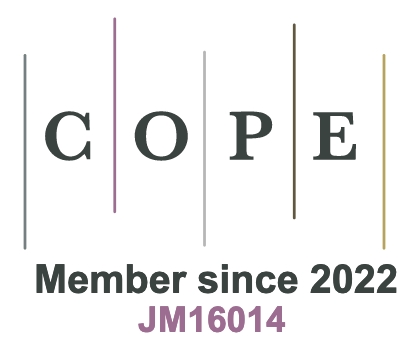REFERENCES
1. Malek A, Eslamibidgoli MJ, Mokhtari M, Wang Q, Eikerling MH, Malek K. Virtual materials intelligence for design and discovery of advanced electrocatalysts. Chemphyschem 2019;20:2946-55.
2. Maier WF, Stöwe K, Sieg S. Combinatorial and high-throughput materials science. Angew Chem Int Ed Engl 2007;46:6016-67.
3. Xiang XD, Sun X, Briceño G, et al. A combinatorial approach to materials discovery. Science 1995;268:1738-40.
4. Koinuma H, Takeuchi I. Combinatorial solid-state chemistry of inorganic materials. Nat Mater 2004;3:429-38.
5. Spivack JL, Cawse JN, Whisenhunt DW, et al. Combinatorial discovery of metal co-catalysts for the carbonylation of phenol. Appl Catal A-Gen 2003;254:5-25.
6. Curtarolo S, Hart GL, Nardelli MB, Mingo N, Sanvito S, Levy O. The high-throughput highway to computational materials design. Nat Mater 2013;12:191-201.
7. Martin R. Electronic structure: basic theory and practical methods. Cambridge University Press; 2004.
8. Ceder G, Chiang Y, Sadoway DR, Aydinol MK, Jang Y, Huang B. Identification of cathode materials for lithium batteries guided by first-principles calculations. Nature 1998;392:694-6.
9. Jóhannesson GH, Bligaard T, Ruban AV, Skriver HL, Jacobsen KW, Nørskov JK. Combined electronic structure and evolutionary search approach to materials design. Phys Rev Lett 2002;88:255506.
10. Stucke DP, Crespi VH. Predictions of new crystalline states for assemblies of nanoparticles: perovskite analogues and 3-D arrays of self-assembled nanowires. Nano Lett 2003;3:1183-6.
11. Curtarolo S, Morgan D, Persson K, Rodgers J, Ceder G. Predicting crystal structures with data mining of quantum calculations. Phys Rev Lett 2003;91:135503.
12. Morgan D, Ceder G, Curtarolo S. High-throughput and data mining with ab initio methods. Meas Sci Technol 2005;16:296-301.
13. Curtarolo S, Morgan D, Ceder G. Accuracy of ab initio methods in predicting the crystal structures of metals: a review of 80 binary alloys. Calphad 2005;29:163-211.
14. Boussie TR, Diamond GM, Goh C, et al. A fully integrated high-throughput screening methodology for the discovery of new polyolefin catalysts: discovery of a new class of high temperature single-site group (IV) copolymerization catalysts. J Am Chem Soc 2003;125:4306-17.
15. Potyrailo RA, Chisholm BJ, Morris WG, et al. Development of combinatorial chemistry methods for coatings: high-throughput adhesion evaluation and scale-up of combinatorial leads. J Comb Chem 2003;5:472-8.
16. Wagner J, Berger CG, Du X, Stubhan T, Hauch JA, Brabec CJ. The evolution of materials acceleration platforms: toward the laboratory of the future with AMANDA. J Mater Sci 2021;56:16422-46.
17. Aspuru-Guzik A, Persson K. Materials acceleration platform: accelerating advanced energy materials discovery by integrating high-throughput methods and artificial intelligence. In. Mission Innovation; 2018.
18. Attia PM, Grover A, Jin N, et al. Closed-loop optimization of fast-charging protocols for batteries with machine learning. Nature 2020;578:397-402.
19. Tabor DP, Roch LM, Saikin SK, et al. Accelerating the discovery of materials for clean energy in the era of smart automation. Nat Rev Mater 2018;3:5-20.
21. MacLeod BP, Parlane FGL, Morrissey TD, et al. Self-driving laboratory for accelerated discovery of thin-film materials. Sci Adv 2020;6:eaaz8867.
22. Jose R, Ramakrishna S. Materials 4.0: materials big data enabled materials discovery. Appl Mater Today 2018;10:127-32.
23. Ghiringhelli LM, Vybiral J, Levchenko SV, Draxl C, Scheffler M. Big data of materials science: critical role of the descriptor. Phys Rev Lett 2015;114:105503.
24. Stall S, Yarmey L, Cutcher-Gershenfeld J, et al. Make scientific data FAIR. Nature 2019;570:27-9.
25. Draxl C, Scheffler M. NOMAD: The FAIR concept for big data-driven materials science. MRS Bull 2018;43:676-82.
26. DeCost BL, Hattrick-Simpers JR, Trautt Z, Kusne AG, Campo E, Green ML. Scientific AI in materials science: a path to a sustainable and scalable paradigm. Mach Learn Sci Technol 2020;1:033001.
27. Scheffler M, Aeschlimann M, Albrecht M, et al. FAIR data enabling new horizons for materials research. Nature 2022;604:635-42.
28. Jain A, Ong SP, Hautier G, et al. Commentary: the materials project: a materials genome approach to accelerating materials innovation. APL Mater 2013;1:011002.
29. Allen FH, Bellard S, Brice MD, et al. The Cambridge crystallographic data centre: computer-based search, retrieval, analysis and display of information. Acta Crystallogr B Struct Sci 1979;35:2331-9.
30. Guarino N, Oberle D, Staab S. What is an ontology? In: Staab S, Studer R, editors. Heidelberg: Springer; 2009. pp.1-17.
31. Adamovic N, Asinari P, Goldbeck G, et al. European materials modelling council. In Proceedings of the 4th World Congress on Integrated Computational Materials Engineering (ICME 2017): Springer; 2017, pp. 79-92.
32. Council EMM. Report on workshop on interoperability in materials modelling; 2017.
33. Draxl C, Scheffler M. The NOMAD laboratory: from data sharing to artificial intelligence. J Phys Mater 2019;2:036001.
34. Lenz-Himmer MO, Ghiringhelli L, Baldauf C, Scheffler M. Ontologies in computational materials science. APS March Meeting Abstracts 2021;2021:X61-002.
35. Nostro P, Goldbeck G, Toti D. CHAMEO: an ontology for the harmonisation of materials characterisation methodologies. Appl Ontol 2022;17:401-21.
36. Simon Clark FLB. Available from: https://github.com/BIG-MAP/BattINFO [Last accessed on 2 Mar 2023].
37. Deng Z, Kumar V, Bölle FT, et al. Towards autonomous high-throughput multiscale modelling of battery interfaces. Energy Environ Sci 2022;15:579-94.
38. Maier D. The theory of relational databases. Rockville: Computer Science Press; 1983.
39. Halpin T, Morgan T. Information modeling and relational databases. Morgan Kaufmann; 2010.
40. Robinson I, Webber J, Eifrem E. Graph databases: new opportunities for connected data. O'Reilly Media, Inc.; 2015.
41. Holzschuher F, Peinl R. Performance of graph query languages: comparison of cypher, gremlin and native access in neo4j. Proceedings of the Joint EDBT/ICDT 2013 Workshops; 2013. pp. 195-204.
42. Vicknair C, Macias M, Zhao Z, et al. A comparison of a graph database and a relational database: a data provenance perspective. Proceedings of the 48th annual Southeast regional conference; 2010. pp. 1-6
43. Banker K, Garrett D, Bakkum P, Verch S. MongoDB in action: covers MongoDB version 3.0. Simon and Schuster; 2016.
44. Seeger M, Ultra-Large-Sites S. Key-value stores: a practical overview. Available from: https://blog.marc-seeger.de/assets/papers/Ultra_Large_Sites_SS09-Seeger_Key_Value_Stores.pdf [Last accessed on 2 Mar 2023].
45. Idreos S, Callaghan M. Key-value storage engines. Proceedings of the 2020 ACM SIGMOD International Conference on Management of Data; 2020. pp. 2667-72.
46. Berge C. The theory of graphs. Courier Corporation; 2001.
47. Moreau L, Freire J, Futrelle J, Mcgrath RE, Myers J, Paulson P. The open provenance model: an overview. In: Freire J, Koop D, Moreau L, editors. Provenance and annotation of data and processes. Berlin: Springer Berlin Heidelberg; 2008. pp. 323-6.
48. MacLeod BP, Parlane FGL, Rupnow CC, et al. A self-driving laboratory advances the Pareto front for material properties. Nat Commun 2022;13:995.
49. Rooney MB, Macleod BP, Oldford R, et al. A self-driving laboratory designed to accelerate the discovery of adhesive materials. Digital Discovery 2022;1:382-9.
50. Pizzi G, Cepellotti A, Sabatini R, Marzari N, Kozinsky B. AiiDA: automated interactive infrastructure and database for computational science. Comput Mater Sci 2016;111:218-30.
51. Edwards R. Neomodel documentation. Available from: https://neomodel.readthedocs.io/en/latest/ [Last accessed on 2 Mar 2023].








